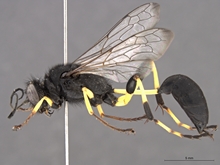 |
Sceliphron spirifex (Linnaeus) (Mud
Dauber)
Sphex spirifex Linnaeus, 1758.
Lectotype: southern Europe: no specific locality (Linnean Society,
London), designated by Day, 1979. |
|
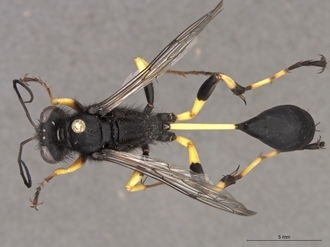 |
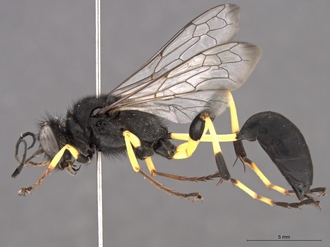 |
|
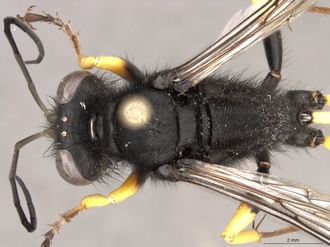 |
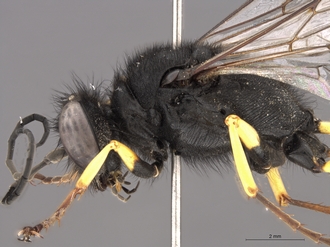 |
|
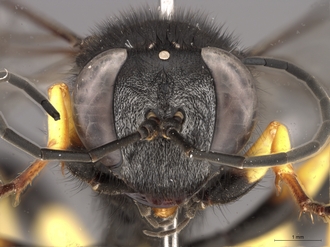 |
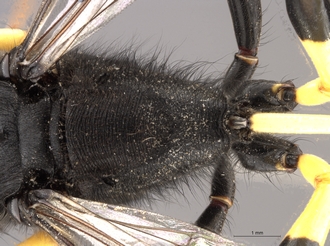 |
|
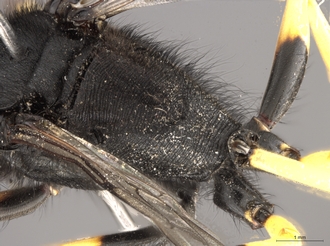 |
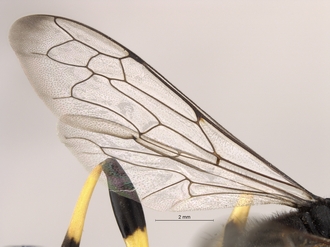 |
|
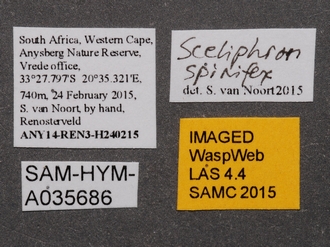 |
|
|
Photographs © Simon van Noort (Iziko Museums
of South Africa).
|
|
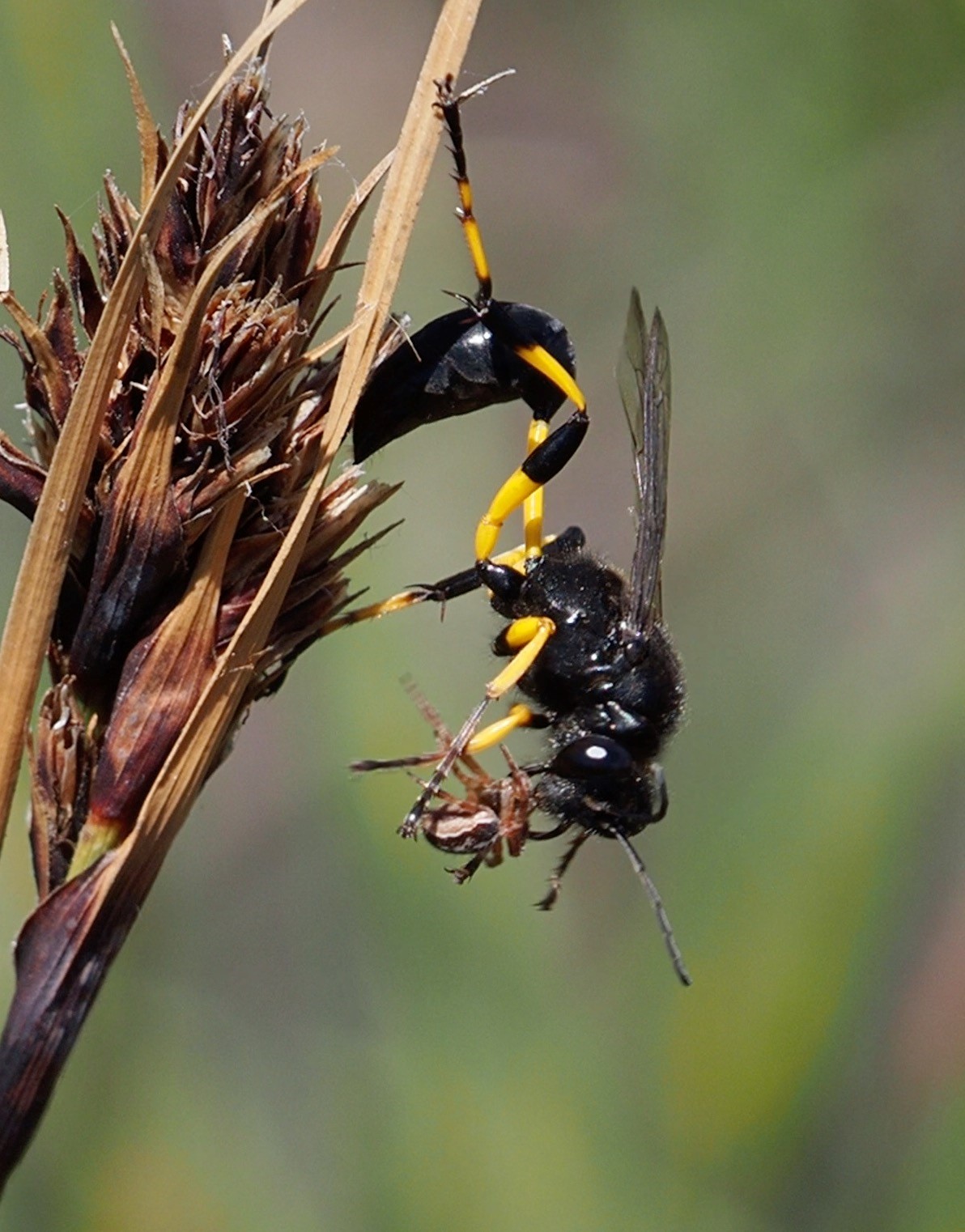 |
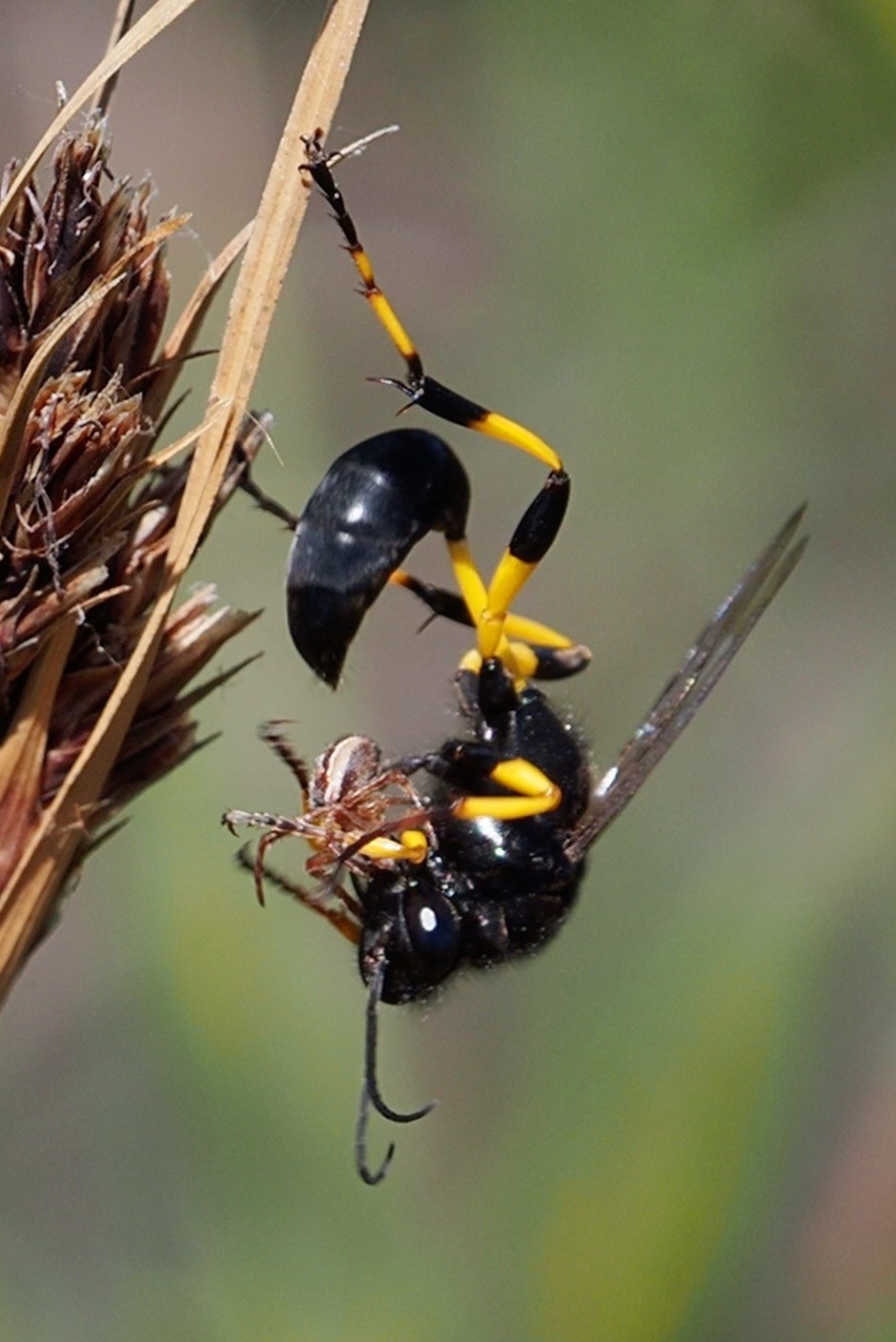 |
|
Female with
prey (Scarborough, Western Cape, South Africa). Photographs
© Callan Cohen.
|
|
Diagnosis |
Superficially similar to
Chalybion spinolae,
but distinguishable by the matt black body (Chalybion spinolae has a metallic blue
lustre to the body)
and colour of the femur and tibia of the front and mid legs, which are
yellow and black (reddish brown in Chalybion spinolae). Females
are also easily separated by the black antennae (Chalybion spinolae
females have reddish-orange antennae, but the males have black
antennae). The petiole is relatively longer. The form of the propodeum
is distinctive: there is an anterior central raised area bounded
laterally and posteriorly by a shallow excavation. The nest construction
for these two species is also very different (see biology below).
Sceliphron spirifex can only be separated reliably from S.
quartinae by the shape of the hind coxae. The scapes (first visible
segment of the antennae) are black in S. quartinae and dirty
yellow in S. spirifex. |
|
Distribution |
Belgium, Bulgaria, Canary Islands, Czechoslovakia, Egypt,
Ethiopia, France, Greece, Italy, Kenya, Lebanon, Liberia, Libya,
Mozambique, Nigeria, South Africa, Spain, Sudan, Tanzania, Toscana,
Turkey, Uganda. |
Biology
|
These wasps are Mud daubers building their
mud nests in a variety of sheltered situations including inside and
around houses. Females construct a nest comprising several adjacent
tubes made from mud. They prey on a variety of spiders and mass provision
the single
cells with an egg laid on the first spider. The cells may be covered
with an outer layer of mud providing extra protection to the developing
larvae (Bohart & Menke, 1976). Prey are predominantly Orb web
spiders, Araneidae (Araneaus, Argiope, Caerostris,
Cyclosa, Isoxya, Nephila), but Theridiidae and
Zodariidae are also captured (Gess & Gess, 2014) |
References
|
Bohart, R.M. &
Menke, A. S. 1976. Sphecid Wasps of the World: a
Generic Revision. University of California Press, Berkeley, California.
Brothers D.J. 1999. Phylogeny and
evolution of wasps, ants and bees (Hymenoptera, Chrysidoidea, Vespoidea and
Apoidea) Zoologica Scripta 28: 233–250.
Finnamore, A.T. & Michener, C.D. 1993. Superfamily Apoidea (pp.
279-357). In GOULET, H. & HUBER, J. (eds). Hymenoptera of the World:
an identification guide to families. Research Branch, Agriculture
Canada, Ottawa, Canada, 668 pp.
Gess SK, Gess FW 2014.
Wasps and bees in southern Africa. SANBI
Biodiversity Series 24. South African National Biodiversity Institute,
Pretoria. 320 pp. |
Links
|
CATALOG OF WORLD SPHECIDAE
sensu lato (= Apoidea excluding bees) compiled by
Wojciech J. Pulawski (California Academy of Sciences). |
Credits
|
Photographs © Simon van Noort (Iziko Museums
of South Africa), or © Callan Cohen.
|
|